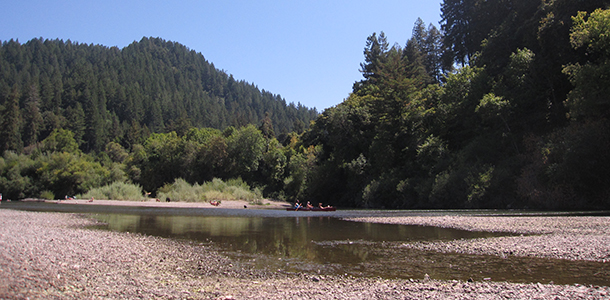
Russian River Valley (Photo: Zeynep Taslica/Flickr)
Earlier this month, the Department of Water Resources (DWR) released the California Water Plan Update 2018. Update 2018 outlines state strategies and actions for managing California’s most precious resource in every region of the state.
Natural Resources Agency Secretary Wade Crowfoot highlighted the importance of the Water Plan, “Water management in California is a grand exercise in partnerships…State government and our many partners achieve more when we work together…Perhaps most importantly, Update 2018 prioritizes supporting local and regional efforts to build water supply resilience across California. This approach recognizes that different regions of the state face different challenges and opportunities, yet all benefit from coordinated State support.”
Karla Nemeth, DWR director, noted the immense challenges affecting every region, “In the past decade alone, California weathered the deepest drought and wettest period on record. These two extremes illustrate the increasing volatility and uncertainty of California’s hydrology, which will only accelerate over time. Warmer winters and decreased snowpack in the Sierra Nevada diminish our natural water storage. Groundwater overdraft and the resulting land subsidence have pushed some groundwater basins to the brink.”
Since 2014, the Summit’s water and working landscapes programs have been supporting and advancing regional and state strategies to meet California’s water needs for people and the environment. Update 2018 addresses the fundamental institutional challenges identified by the Summit and others: funding, governance, and regulatory alignment.
CA Fwd and the Summit network contributed to Update 2018 through the Sustainability Outlook Pilot Project for the Russian River. The report, Toward Russian River Sustainability, was a collaborative effort among Summit partners, local and regional stakeholders, and DWR to explore how DWR’s sustainability performance approach could be applied in the Russian River watershed. The report recommends a collective action approach for developing a durable vision, measurable outcomes, and broadly-supported strategies for watershed sustainability. The concepts for improving state-regional partnerships for sustainability were a core element of the water and working landscapes program at the 2018 Summit in Santa Rosa.
For the 2019 Summit in Fresno, the Ecosystem Vitality and Working Landscapes team and partners will be building on the Russian River work, Update 2018, Governor Newsom’s executive order on a water resilience portfolio, and the Regions Rise Together initiative.
Glenda Humiston, vice president of UC Agriculture and Natural Resources and team lead for Ecosystem Vitality and Working Landscapes said, “The San Joaquin Valley and Sierra Nevada are ground zero for developing resilient strategies to make our regions prosperous, equitable, and sustainable. The Summit is the forum for aligning and advancing triple-bottom-line policies that work.”

